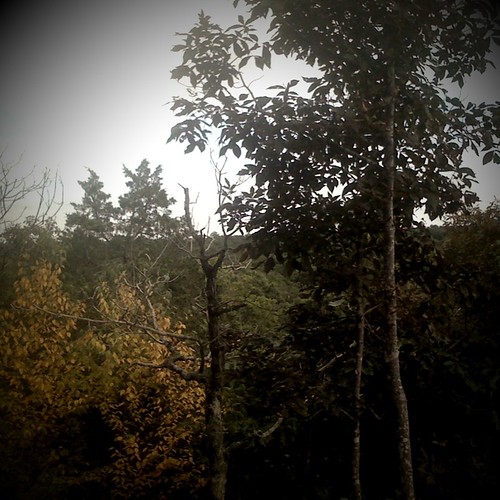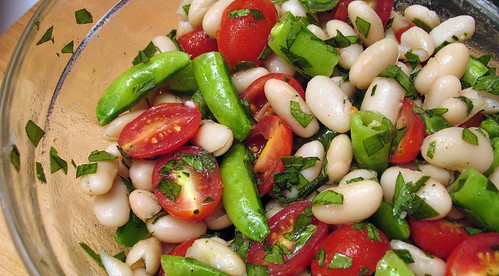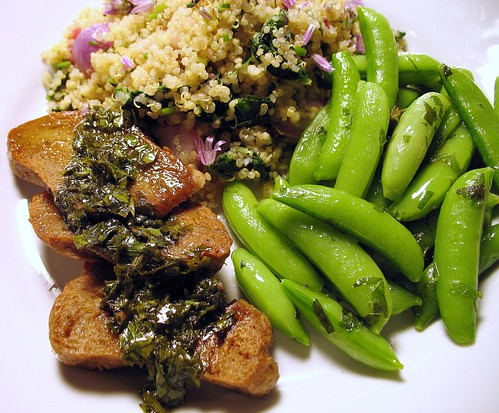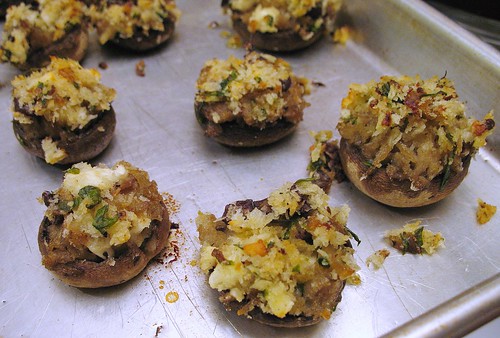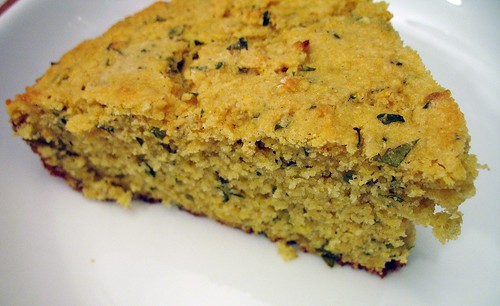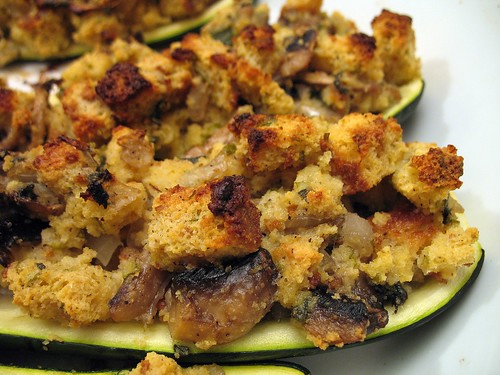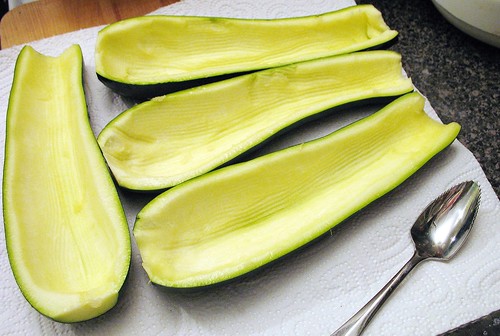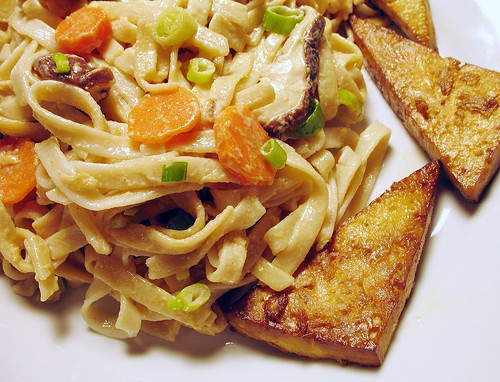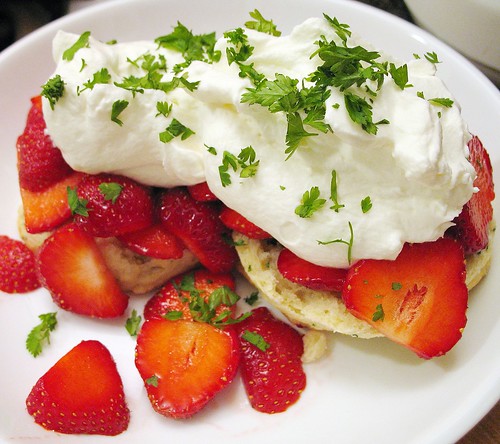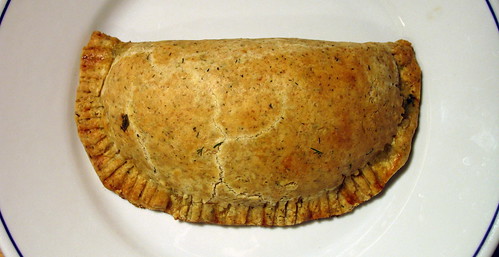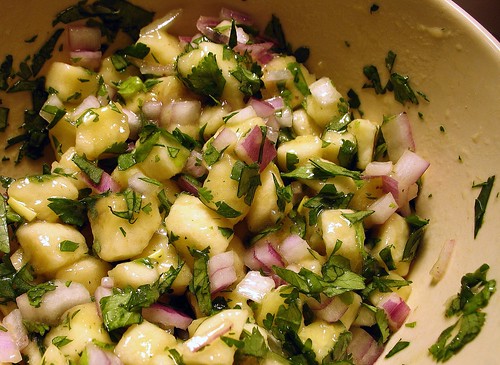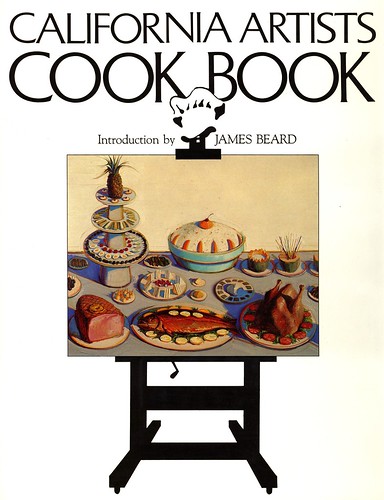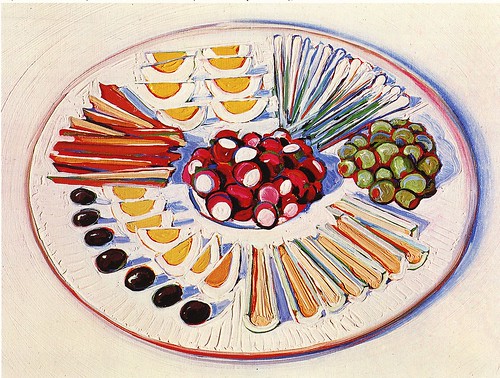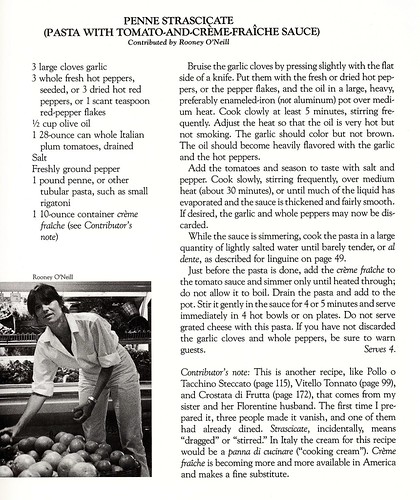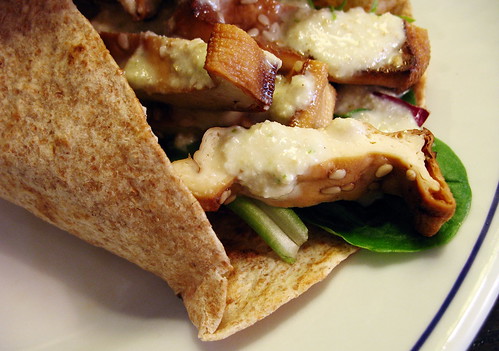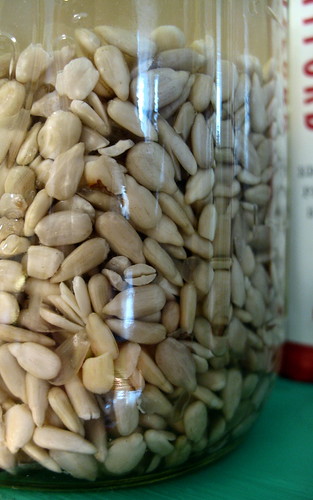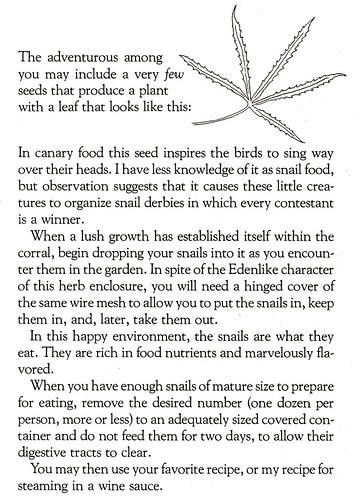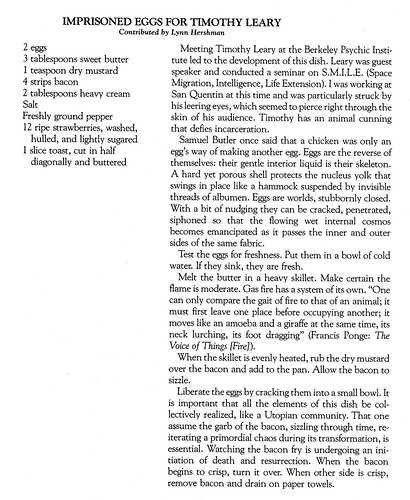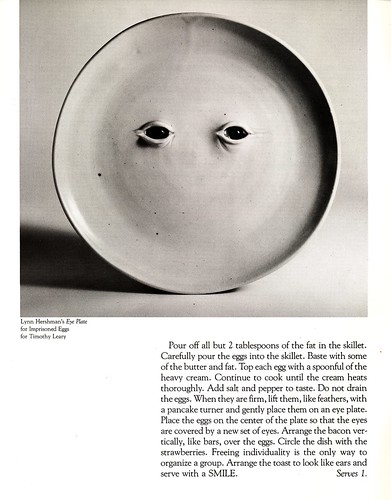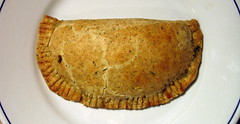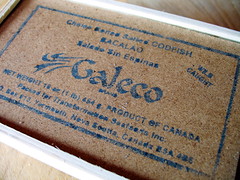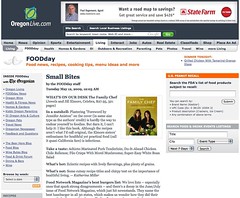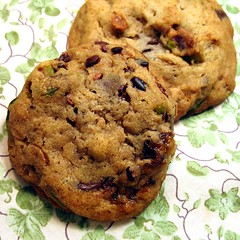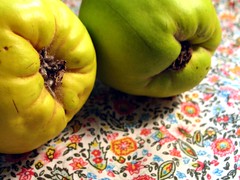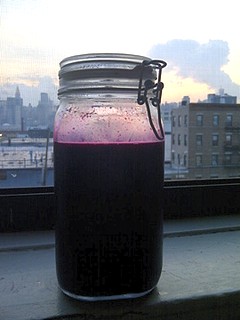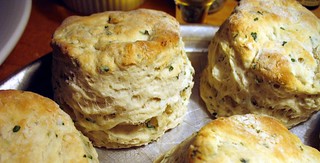
All of these screen captures are gratefully borrowed from the 1000 Frames of Hitchcock project.
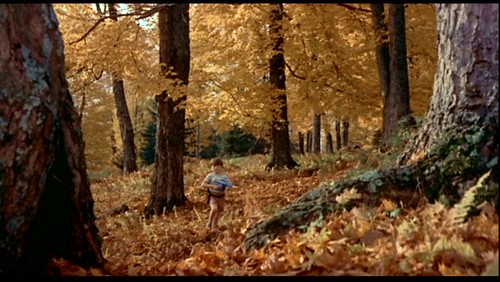
That's a wee little Jerry Mathers, pre-Beaver. Do you recognize the movie yet?

Those socks ought to give it away, but it's one of Hitchcock's lesser-known American films and relatively few people here have seen it. It's The Trouble With Harry, and it was released in 1955 to general ambivalence and then was unavailable for thirty years. It was re-released in the Eighties but it remains under-loved — it's not even mentioned on his Wikipedia page at the moment.
There are a number of possible reasons for this. It's sometimes described as "one of Hitchcock's most British films," which is an American way of saying the humor is thought to be inscrutable and not labored enough. It didn't have any stars in it (who were stars at the time, at least). And — potentially very problematic for viewers expecting suspense — nothing much happens in it. Harry, whose stocking feet you see above, is dead from the very beginning. He's dead even in the lovely opening credits by Saul Steinberg:

John McCarten, writing in The New Yorker at the time, didn't like this aspect one bit: "Alfred Hitchcock, whose work has been going steadily downhill ever since he arrived in Hollywood, skids to preposterous depths in 'The Trouble With Harry.' This is an over-blown joke about a corpse."
Harrumph! Some of us like corpse jokes very much. Especially when they're set amidst cheerfully idiosyncratic New England types, in the pastoral scenery that displays them to their best advantage. (In other words, exactly the sort of person I'd like to buy roadside maple syrup from).
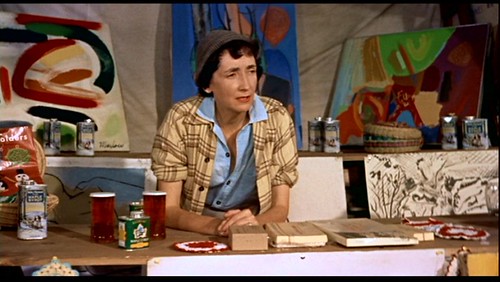

Among the main characters are Wiggie, who does indeed sell maple syrup, and Sam, an artist. Wiggie is played by Mildred Dunnock and Sam is played by John Forsythe, who you might recognize from teevee (he was Blake Carrington on "Dynasty" and before that, the voice of Charlie on "Charlie's Angels"). Don't let that put you off; he was surprisingly charming before Aaron Spelling embalmed him in oil money.
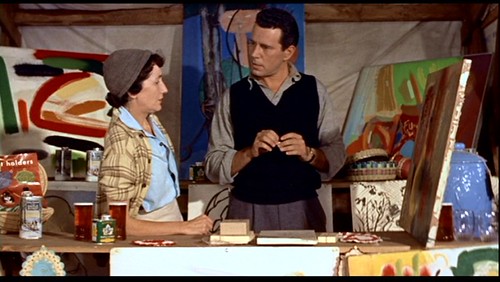
The Trouble With Harry also features Shirley MacLaine. It was her first film and she's adorable in it as a pouty-faced single mother. Naturally she and the handsome painter have to sort out their feelings for one another.


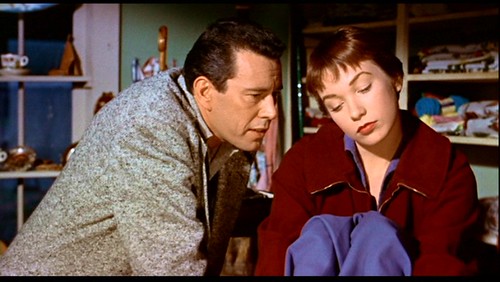
They also have to sort out what to do about Harry's corpse, and in that they have company: Miss Graveley (a spinster-ish older woman, just the type Hitchcock usually likes to do something gruesome to, played by Mildred Natwick) and Captain Wiles (a roly-poly retired sea captain who awkwardly puts the moves on her over a plate of blueberry muffins, played by Edmund Gwenn, who you've doubtlessly seen as Santa in Miracle on 34th Street).


There isn't much else to say about the plot. If black humor appeals to you the movie might become a favorite, not because any one moment is screamingly funny but because of the way the characters relate to the dead guy — each with what might seem like indifference, but each has their own cogent reasons for wanting Harry buried — and because of the way they get along with each other. Hitchcock supposedly changed the story's location from London to Vermont because he liked the contrast between the dark theme and the rural setting at its brightest and most beautiful, but there is something about the characters' individuality and the space they give one another that's a perfect fit in an idealized New England. (This subject surely deserves its own post here someday, given our tendency to head north to Maine every summer, where the good humor and neighborliness of the seemingly granite-faced locals tends to be lost on first-time visitors. Having grown up in Connecticut I feel qualified to draw distinctions among hundreds of varieties of froideur, from the loving kind to the truly disdainful, each of which manifests itself differently depending on the class of the bearer. Eskimos have many words for snow, etc.) Anyhow, if you like the idea of warm and witty people digging a grave together — and your definition of "warm" is not too inflexible — The Trouble With Harry is just the right film for curling up with on a cold night.
But what to eat? If your kitchen isn't a gingerbread-scented shitshow at the moment and you can bear to face something other than take-out, it might be nice to start off with some crisp chickpea flour pancakes with black olive and sage.
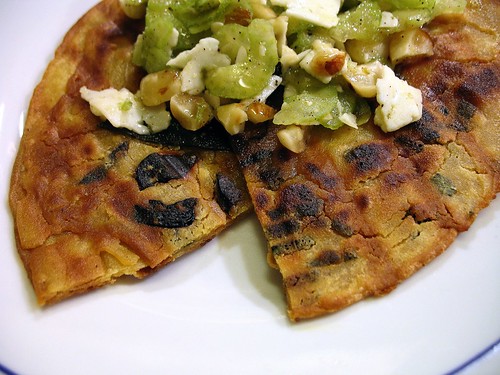
Maybe you have a sack of chickpea flour left over from when Bittman urged you to make something similar a few months back? Or maybe you are a long-time reader who has had the stuff sitting around since I enthused about basic Indian ones in ye olde 2006? Probably not. It doesn't matter. The point is, they're amenable to just about any direction you want to take them in. These latest ones were vaguely Mediterranean, without belonging to (or desecrating) any one particular tradition.
It's nice to have some kind of sauce or chutney or something with them for textural contrast, and with these we had a sort of celery / hazelnut / Manchego salsa. You could definitely make the whole dish vegan by leaving the cheese out. If I hadn't had a little bit of it that needed to be used up I wouldn't have bothered to go out and get some.
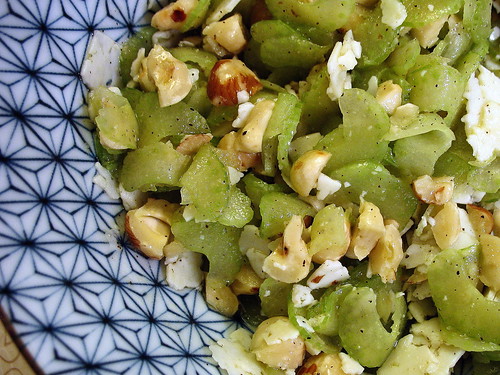
chickpea flour pancakes with black olives and sage
and celery / hazelnut / Manchego salsa
The number of servings will depend on how hungry everyone is and what else you're serving, but this should be enough for at least 4 people as a first course.
for the pancakes:
2 cups chickpea flour (also called besan in Indian grocery stores)
1/2 teaspoon cayenne pepper
1 teaspoon fine sea salt (or a little less if your olives are very salty)
2 cups cold water
1 heaping tablespoon finely sliced fresh sage leaves
approximately 1/3 cup oil-cured black olives, pitted and chopped (or whatever your favorite type of olive is . . .)
olive oil for cooking
additional fresh sage leaves, whole, for decorating the pancakes (optional)
for the celery / hazelnut / Manchego salsa:
2 stalks of celery, very finely sliced
2 heaping tablespoons toasted and skinned hazelnuts, coarsely chopped
2 teaspoons sherry vinegar
1 to 2 tablespoons olive oil (if the celery is very fresh you may only need 1)
a pinch of fine sea salt and freshly ground pepper to taste
2 to 3 tablespoons Manchego cheese, very finely sliced and then chopped or crumbled into bite-sized pieces
Sift the chickpea flour into a bowl, stir in the salt and the cayenne pepper, and slowly stir in the cold water 1/2 cup at a time, adding more only when you've gotten the lumps out of what you started with. (This isn't difficult if you make a little well in the center of the dry flour and spice mixture, pour the water in it, and slowly bring in more and more of the flour with your spoon). When all of the water is incorporated the batter should be very much like typical breakfast pancake batter. Madhur Jaffrey says that when preparing her Indian recipe for these you should set the batter aside for 30 minutes before using it and I always do, but I don't know why it's necessary. After you've let the batter rest, give it a good stir and see whether any stubborn lumps remain. If so, you can strain the batter through a sieve.
Stir the sage and the chopped olives into the batter and heat a heavy skillet (preferably cast iron or non-stick) over medium-high heat. Drizzle in enough olive oil to coat the bottom evenly and when it's very hot (but not smoking hot) add 1/4 cup or so of batter to the pan, tilting the pan to spread the batter around evenly. If you like, place a few whole fresh sage leaves on the uncooked side of the pancake that's facing up at you before you flip it over. Whether you do this or not, it's a good idea to drizzle a tiny bit more olive oil over the uncooked side of the first pancake before you flip it. (You may not need it for the following pancakes, but the first one can be too dry without it). Flip the pancake over when it's starting to look crisp at the edges and cook the other side until golden brown. (Cook for approximately 3 to 4 minutes per side). Stack the cooked pancakes on a layer of paper towel or clean kitchen towel to absorb any excess oil and keep going until the batter's gone. Stir it once in a while as you're cooking to make sure that all the olives and sage don't end up in the last pancake.
While the pancakes are cooking, stir the salsa ingredients together in a small bowl and set aside. Add the cheese last; otherwise it will be very crumbly.
Leftover pancakes can be kept in the refrigerator and reheated until crisp in a medium-hot oven. (If your oven is on the nod, you can even reheat them in a electric panini press, like the ones with faint grill marks pictured above).
The pancakes are very filling for a first course so don't plan on following them with anything too heavy. Radish greens soup would be just right and requires very little in the way of ingredients. I wrote about it here (scroll down a bit), and a direct link to the recipe is here.
Did you want dessert too? It had better have maple syrup in it after all this leaf-peeping. I enthusiastically recommend a Maple-Buttermilk Pudding Cake, which is so much nicer than it looks. I promise it's nothing at all like the greenish lump of cornbread it appears to be. I have no idea whether the recipe is authentic or not but it's so good warm out of the oven that I'm confident you could seduce any French-Canadian Christmas tree vendor you've had your eye on with a spoonful of it.
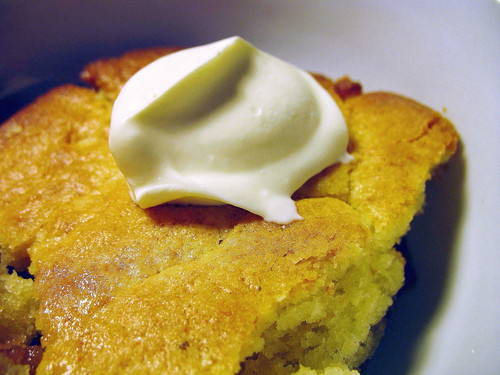
It's gooey and richly-flavored with maple syrup (too gooey to be a proper "cake," really, since the syrup on the bottom doesn't solidify) and it's just perfect with a little blob of crème fraîche on top. Don't even think of making it with imitation "pancake topping" (or whatever that sad gunk is called). It's not a fancy dessert at all but that's all the more reason to use good, honest maple syrup: it's the dominant flavor here, so it had better come out of a picturesque maple tree at the hands of a picturesque backwoods beard-wearer rather than an industrial vat of corn syrup and synthetic flavors.
Semi-related (click on images for links):
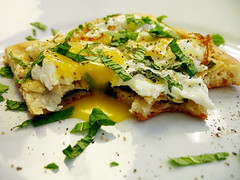
The first post in our very-occasional series about dinner and a movie involved a pizza that was better for breakfast.

If you are a Hitchcock nut I've got a little something in my bookshop for you.






